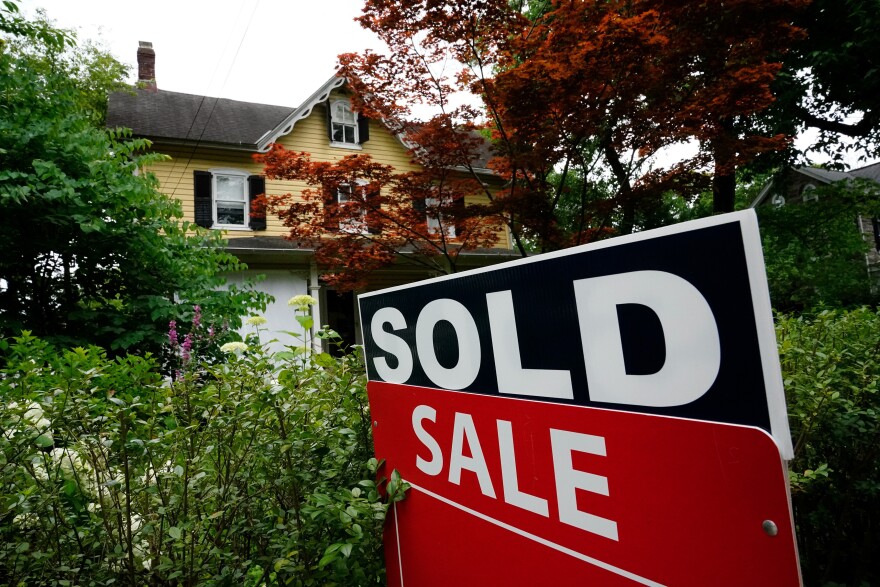BETHLEHEM, Pa. — Selling your home? Buying a home?
Frustrated at having to pay the standard 6% commission to real estate professionals involved in the deal?
Help is on the way.
The National Association of Realtors (NAR), which for decades established the guidelines for fees on home sales, has agreed to eliminate its rules on commissions.
On Friday, legal counsel for the NAR agreed to settle a series of lawsuits totaling $418 million in damages by eliminating its mandatory commission fees. The suits were brought by home sellers arguing the NAR rules forced them to pay exorbitant fees.
The agreement is expected to be filed within weeks and would require a federal court’s approval.
Some experts said the shift on commission structure, and the billions of dollars that would flow into the housing market as a result, could spark a recovery in the housing market.
“With this new rule, sellers and buyers will continue to have the ability to negotiate fees."Hank Lerner, chief legal officer, Pennsylvania Association of Realtors
Net effect
Homeowners throughout the Lehigh Valley and the nation could see a substantial savings in the cost of selling their homes.
A December 2023 survey of local real estate agents found the average commission in Pennsylvania is 5.48%; the national average is 5.49%. The average listing commission in the state is 2.81%, while the average buyer’s agent commission is 2.67%
The elimination of mandatory fees could result in significant savings for clients. Prior to Friday’s agreement, to sell a house worth $253,762 — the median home value in Pennsylvania — Realtor fees would be about $13,906.
Locally, real estate professionals Monday were still sorting through the ramifications.
“Staff and leadership at the Greater Lehigh Valley Realtors (GLVR) are poised to help its membership with whatever the future may hold,” said Lori Campbell, GLVR president, in an email.
“If the agreement is approved and changes are mandated, we will ensure our Realtors, our association and the Greater Lehigh Valley Multiple Listing Service are in compliance. GLVR, through great leadership, will address what lies ahead one step at a time.”
Americans now spend about $100 billion a year on commissions. That number will probably decline by between $20 billion and $50 billion, experts say.
New rules, commissions
The NAR, which represents more than 1 million Realtors, also agreed to put in place a set of new rules.
One prohibits agents’ compensation from being included on listings placed on local centralized listing portals known as multiple listing services, which critics say led brokers to push more expensive properties on customers.
Another ends requirements that brokers subscribe to multiple listing services — many of which are owned by NAR subsidiaries — where homes are given a wide viewing in a local market.
Another new rule will require buyers’ brokers to enter into written agreements with their buyers.
Gail Hoover, a realtor with Re/Max Central in Center Valley, believes the impact of the new rules may not be known for some time, as details are still being worked out.
“Until it’s actually settled-settled, anything could change, and that could change the outcome,” Hoover said.
Hoover’s initial fear is that buyers might end up paying even more. Currently, sellers tend to split the total combined commission with the buying agent, effectively paying for them.

Hoover’s understanding of the new rule is that the selling Realtor can’t list the combined commission on the multi-listing service.
The selling Realtor can still pay the buying Realtor. But this ruling may cause the selling Realtor to be more likely to not pay the buying Realtor and pocket the extra cash instead of lowering the listing price.
“Right now, home buyers are facing all-time record home prices," Hoover said. "Interest rates are going up to where we haven’t seen them in a very long time. And now if buyers are to be paying for representation costs themselves, you could be adding somewhere around 3% to closing costs.”
In the end, there still may be an incentive for selling agents to pay buying agents in order to attract buyers, Hoover said. But, she added, it can’t be immediately communicated whether they’ll do so.
“They may have intended to do this all in good faith,” she said. “But I’m not sure they’ve really thought this through.”
“They may have intended to do this all in good faith. But I’m not sure they’ve really thought this through.”Gail Hoover, real estate professional in Center Valley
Hoover said she’s not worried how the new rules will affect her livelihood, but is also unsure how the field will change.
“We all have to see how this works out.”
The Pennsylvania Association of Realtors (PAR) will work over the next few months to review its forms and practices to ensure they reflect the new NAR rules, Campbell said.
Decades ago, the NAR set the standard commission at six percent, to be split between an agent representing the seller and an agent representing the buyer.
Buyers and sellers have always had the ability to negotiate fees with their clients.
However, if a home seller tried to negotiate, an agent would often issue a veiled threat: You won’t find a good seller’s agent to work with you, and buyers’ agents won’t show your house to clients, according to a report in The New York Times on Monday.
The Realtors’ tactics succeeded because they operate much of the network that’s crucial to the housing market, such as the database of listings. They could keep out agents who would have competed on price, the report said.
Negotiating fees
Hank Lerner, chief legal officer for the PAR, said he is unaware of any Lehigh Valley or Pennsylvania real estate professionals having forced clients to pay exorbitant commissions.
“With this new rule, sellers and buyers will continue to have the ability to negotiate fees," Lerner said in a phone interview on Monday.
“While the settlement comes at a significant cost, we believe the benefits it will provide to our industry are worth that cost,” said Kevin Sears, president of the NAR, in a statement.
In November, a federal jury in Missouri found the NAR and two brokerages liable for $1.8 billion in damages for conspiring to keep agent commissions artificially high.
Because it was an antitrust case, the NAR was potentially on the hook for triple those damages — $5.4 billion.
The NAR had pledged to appeal the case, but other brokerages settled — and, eventually, so did the NAR, on Friday.
Reporter Olivia Marble contributed to this report.


